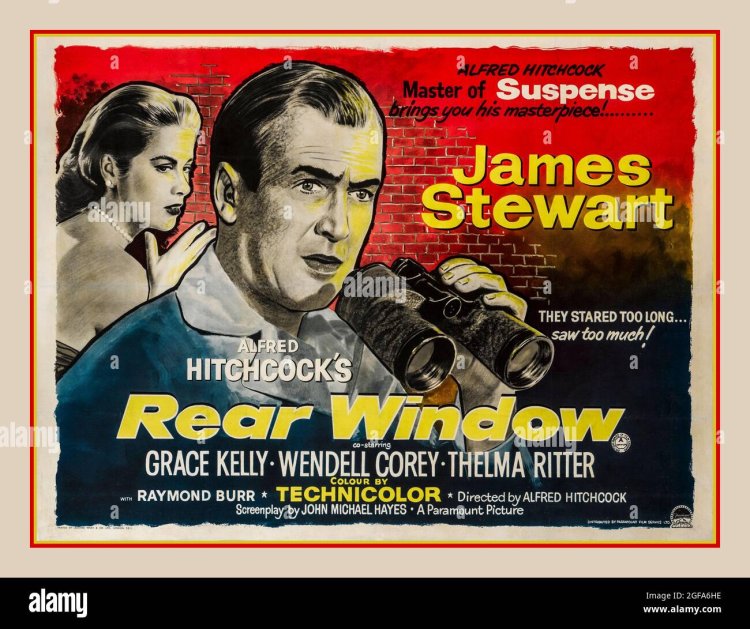Rear Window : 1954 thriller
Rear Window is a 1954 thriller directed by Alfred Hitchcock and starring James Stewart and Grace Kelly. The film tells the story of a wheelchair-bound photographer named L.B. Jefferies who becomes obsessed with spying on his neighbors through his rear window. As he becomes more and more convinced that one of them has committed a murder, he enlists the help of his girlfriend and his nurse to investigate.

Plot Summary
The film is set entirely in the Greenwich Village apartment of Jefferies, who is recovering from a broken leg. He spends his days watching his neighbors through his rear window, which provides a fascinating glimpse into their private lives. He becomes particularly intrigued by a salesman named Lars Thorwald, who he believes has killed his wife.
Jefferies enlists the help of his girlfriend Lisa and his nurse Stella to investigate Thorwald's suspicious behavior. They observe him buying large bags of lime and packing his belongings, leading Jefferies to conclude that he has disposed of his wife's body.
As they continue their investigation, they become convinced that Thorwald has indeed murdered his wife. They alert the police, who investigate and eventually arrest Thorwald.
Themes
One of the central themes of Rear Window is the voyeuristic nature of human beings. Jefferies is able to spy on his neighbors without their knowledge or consent, providing him with a sense of power and control. The film also explores the idea of the gaze, as Jefferies is constantly looking at others while remaining hidden from view himself.
Another important theme is the nature of relationships, particularly romantic relationships. Jefferies is initially hesitant to commit to Lisa, but as he becomes more involved in the investigation, he realizes how much she means to him. The film also examines the concept of gender roles, as Lisa defies societal expectations by taking an active role in the investigation.
Cinematic Techniques
Hitchcock employs a variety of cinematic techniques in Rear Window to create tension and suspense. One of the most notable is the use of long takes, which allow the audience to see everything that is happening in the apartment complex. The camera is also positioned in such a way that the audience becomes a part of Jefferies' voyeuristic experience.
Another important technique is the use of sound. The audience can hear what is happening in the other apartments, providing them with a sense of the events taking place. The music is also used to create tension, with a suspenseful score building throughout the film.
Also Check Christopher Nolan's New Film "Oppenheimer"
Conclusion
Rear Window is a classic film that explores themes of voyeurism, relationships, and gender roles. Hitchcock's use of cinematic techniques creates a suspenseful and engaging experience for the audience. We hope that this guide has provided you with a valuable resource for understanding the film and its significance in cinema history.





























